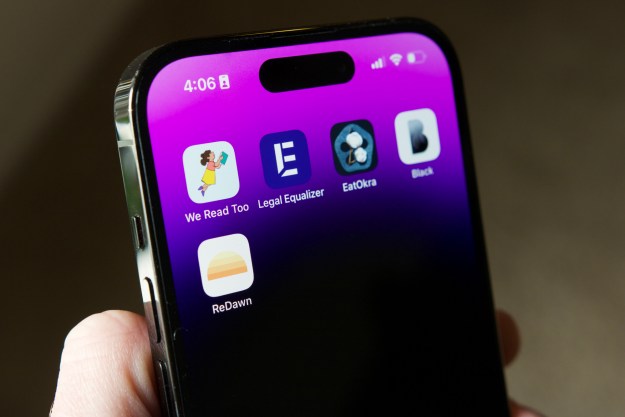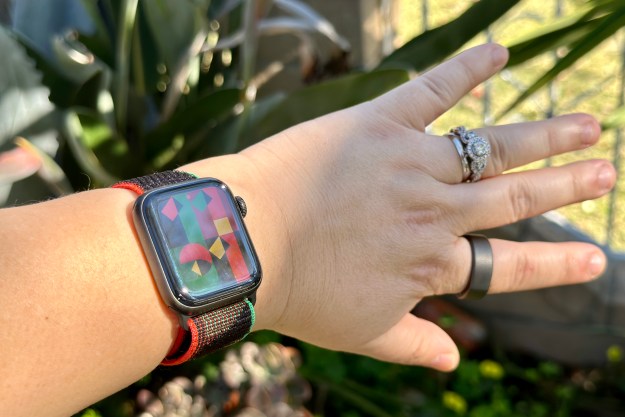You’re charging your phone in another room and you hear the notification alert that new messages are coming in. You want to check — but you’re lazy, or you’ve got something else taking up your time, maybe on your tablet or laptop right in front of you. The messages might be important, or they might not be. You’ll never know until you get up to find out. Or maybe not.
BlackBerry thinks it has the answer to keeping you connected and productive with Blend, a free app that works on various devices to interface directly with the company’s handsets from your PC and access files on your desktop or tablet from your handheld. Could it help return Blackberry to the center of your digital life?
Blending in with others
Announced when the company launched its new Passport handset, Blend isn’t exclusive to that device but rather a cornerstone of version 10.3 of BlackBerry’s OS. Since that update hasn’t rolled out to the other BB 10 devices, the Passport is the only one that can actually make use of what Blend does right now.
Productivity wasn’t stifled by our dead laptop battery, and the security blanket overhead ensured nothing was compromised.
So what exactly does it do? It might be better to start off with what Blend doesn’t do. At first glance, Blend seems to be a cloud platform with full two-way file transfer capabilities. That’s not really the case. Blend doesn’t use the cloud to do anything, it just acts as a conduit to peer into your BlackBerry handset from other devices, particularly Windows PCs, Macs, iPads, and Android tablets. The openness of the platform notwithstanding, absent support for crucial platforms like the iPhone, Android phones, and Windows Phone (yes, we said it) is conspicuous.
We touched base with a BlackBerry executive to find out why and were told Blend is “under active development” wherein the company is trying to support the largest base of users with the launch version. Expansion to other smartphones should follow, since there is already an acknowledgement that there are plenty of two-phone users out there.
Only time will tell how that pans out, but in the meantime, the platform shows plenty of promise already — even if it has a few hiccups out of the gate.
Getting up and running
Blend is a free download, and incurs no subscription or residual fees. There are also no ads to deal with. Already preloaded as part of BlackBerry OS 10.3, it has to be downloaded and installed on all the client devices you want to connect to it. Once that’s done, it has to be running on the client to facilitate the connection. Moreover, said device also can’t go to sleep, or else there’s no way to wake it back up and dig into its files and folders. Changing your computer settings to keep it from going to sleep is enough to avoid that. You can also choose to “remain signed in,” except that option is greyed out in Blend’s quick settings, and you can only turn it on from the credentials screen that asks you to enter the device’s password.
In order to access PC or Mac files from your Blackberry, whether locally or remotely, BlackBerry Link has to be open as well. This is because turning Remote Access on in Link opens a line to File Manager on the BlackBerry. Blend cuts into that bridge and uses it to enable access on its own platform. We encountered some frustrating issues getting this to work initially, only to find that rebooting the Passport and waiting over five minutes to try again worked like a charm.

Of course, the primary reason Blend exists is to connect the opposite way, which is much smoother with fewer requirements. Link doesn’t have to be open to reach into your Blackberry, and we encountered no real issues getting that to work. It took less than 10 minutes to set everything up by simply logging in with our BlackBerry ID and pairing the devices we wanted to connect. It’s as efficient a setup — at least from device to Passport — as we’ve seen BlackBerry achieve on any of its software programs.
We should also note that a few cloud services — Dropbox, OneDrive, and Box — are supported here, too. Download the apps (Connect to Dropbox is already preloaded), sign in to the respective accounts, and they will appear on the Blend interface.
Features and performance
The key feature Blend offers is full access to your BlackBerry Hub. All the email, messaging, and calendar accounts and settings you have on the phone will be accessible through the Blend interface. This is huge for anyone who multitasks on different devices on a daily basis. The effects are also in real-time, meaning that an incoming message or notification on your phone is just as immediate on Blend.
Absent support for crucial platforms like the iPhone, Android phones, and Windows Phone (yes, we said it) is conspicuous.
The email client is a little Outlook-esque (albeit with far fewer features), but we didn’t mind, considering it was clean, easy to understand, and beautifully organized. The left column keeps your various accounts separate, making them easier to manage. You could also view everything in one unified inbox by clicking an icon that merges them all together.
We were able to respond to emails on a personal Gmail account, as well as work email — dealing with separate inboxes, yet accessing the same options. We attached documents that resided not only on the Passport but also on a Mac and a PC on which Blend was running, as well as from the three supported cloud-based accounts. This worked in reverse as well, where we could compose an email on the Passport and then seek out a document stored on a computer. We hit a roadblock when trying to do that with an iPad or Android tablet because remote access to files stored on tablets doesn’t work yet.
Text messages and BBM were treated the same way. We were able to converse via text and BBM with multiple people at the same time without even being near the phone. We could attach photos or documents stored on the Passport or a connected computer while the phone was charging in the next room. In fact, it was even happening while this review was being written on a MacBook Pro.
This isn’t a novel concept, since iMessage has had that kind of wide integration already, but it’s in a wider context here, where it’s not just one messaging client supported but a few of them in one interface. We would love to see other popular messaging apps like WhatsApp and Hangouts integrated here, but we’re not holding our breath that BlackBerry will open the door that wide.
We found the calendar integration to be superb, with an easy route to add meetings, appointments, and reminders. Contacts are also properly organized, separating those you have on your phone or SIM, to BBM, Twitter, LinkedIn, and Facebook. They can also be aggregated with the unified contact list.
From a corporate perspective, IT managers won’t fret over Blend: Work and personal profiles can be treated separately through BlackBerry Balance, ensuring that no data is pushed in the wrong direction. Not only that but everything we did on Blend was encrypted; use it on a friend or colleague’s computer and there would be no trace of our presence left behind. We’d also have no access to files on that machine unless we went through the setup to bridge them. We found this to be brilliant for the simple reason that productivity wasn’t stifled by our dead laptop battery, and the security blanket overhead ensured nothing was compromised.
Growing pains
As good as Blend is off the bat, it’s not without startup jitters. As noted earlier, we had a frustrating sequence getting the Passport’s File Manager to recognize the files on our Mac and PC. A restart and short wait remedied that once and for all, but it shouldn’t happen in the first place. We also couldn’t help but feel annoyed that BlackBerry Link had to be running on the computer just to access local files.
As good as Blend is off the bat, it’s not without some jitters along the way
More important, while the phone Hub includes direct messages from Twitter, Facebook, and LinkedIn, we weren’t able to see them on Blend.
It’s also nice to see that three of the top cloud services are supported, but that list should ideally grow. The problem is that support needs to be native — apps must exist in BlackBerry World, and developers aren’t exactly clamoring to write them. Even though the Passport and BB OS 10.3 include the Amazon Appstore and the 200,000 Android apps that go with it, there’s no way to integrate any of the popular cloud apps downloaded from there.
We can forgive BlackBerry for not including smartphone support yet. There are still two-phone users out there wielding BlackBerrys for their jobs, so it would be prudent to make it easier to get those two devices talking to each other, given the company’s pedigree in security. And despite supporting Windows PCs, Windows Phone devices are left out, while the Amazon Appstore partnership hasn’t produced a curated Blend app that will work with Kindle tablets.

In fact, Blend can work only with Android tablets running KitKat, disqualifying a fair number of the affordable variety that are still chugging along on Jelly Bean.
Lastly, we would’ve loved to see voice calls in Blend as well. Apple is finally making that happen with iPhone calls on the Mac (with OS X Yosemite), but BlackBerry has left out a significant piece of the puzzle here.
Conclusion
Every hardware or software product is always missing something from the start, so some of our gripes and suggestions may indeed be in the works for future updates. What Blend lacks in flashy design, it makes up for in spades the level of integration, productivity, and security it allows. At times, we wondered what might have been had the maligned PlayBook tablet featured this kind of bridging when it first came to market over three years ago. Having learned from that mistake, BlackBerry focused on its core strengths with Blend — and it shows.
Ironically, its overall success may come down to how well it plays with non-BlackBerry devices. It’s a solid lineup to start out, but if the company drags its heels on being more inviting, dual-wielding users might opt to cruise over to other avenues.
Score: 8
Highs
- Easy setup and user-friendly interface
- Leaves no trace or residual files on connected devices
- Full and efficient access to BlackBerry Hub
- Local and remote access to files stored on computers and cloud services
Lows
- No apps for iPhone, Android phones, or Windows Phone
- No option to make or take phone calls
- Cloud support could use a few more services
Editors' Recommendations
- The best iPhone and Android apps for Black History Month 2024
- The best charger I’ve ever used has a huge Black Friday discount
- GoPro unveils its latest action camera, the Hero 12 Black
- BlackBerry trailer depicts the rise and fall of the iconic phone
- I’ve used Android phones for 10 years, and I hate these ones the most






